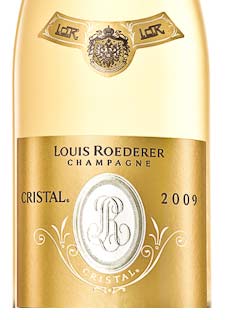
Illustrious history in the making
'The 2009 Cristal literally shimmers on the palate, showing great depth and purity in its sumptuous layers of fruit. It is a magnificent wine endowed with superb length and exceptional overall balance. The 2009 Cristal is 60% Pinot Noir and 40% Chardonnay. The percentage of wine aged in oak is 15%, which is down slightly from previous vintages. 94-96 points' - Antonio Galloni, vinous.com
Is Roederer a grower or a brand? Always brilliant, in the last few years it has improved yet further. Its ability to do this is entirely governed by its ownership of over 240 hectares of high quality land, mostly mid-slope and much in grand cru sites. Most Champagne houses own very little but Roederer's holdings give them control over their own destiny and allow them to vastly improve soil quality, lower yields and, as a result, make better wines. One third of the vineyards is managed biodynamically, making Roederer easily the most important biodynamic farmer in Champagne. In fact, this is one brand that behaves and talks like a grower.
In Champagne, getting the fundamentals right means managing water supply from the sponge-like chalk subsoil, and this in turn means ploughing. An expensive hobby, this is something that few of Champagne's farmers do, but more than 96% of the Roederer holdings are ploughed. Ploughing slices off the roots near the surface, forcing the main root system downward. It also breaks up the surface pan and allows rain and snowfall to filter through the topsoil and into the chalk, where it is soaked up and forms a reservoir for the summer growing season.
Roederer was founded in 1776 and Cristal was developed for the Russian royal family a century later. Cristal itself is a semi-autonomous state within Roederer, and is planted to 60% Pinot Noir and 40% Chardonnay. Not all the parcels are selected every year, but in 2009 the final blend exactly reflects the proportion of the vineyard. As you would expect in a Champagne that is expected to be aged, there is no malolactic and a relatively high final dosage. Some new purists criticise this approach but it is a proven method of obtaining brilliant results for ageing the wine successfully. /CW
Offered subject to remaining unsold; available Autumn 2016


